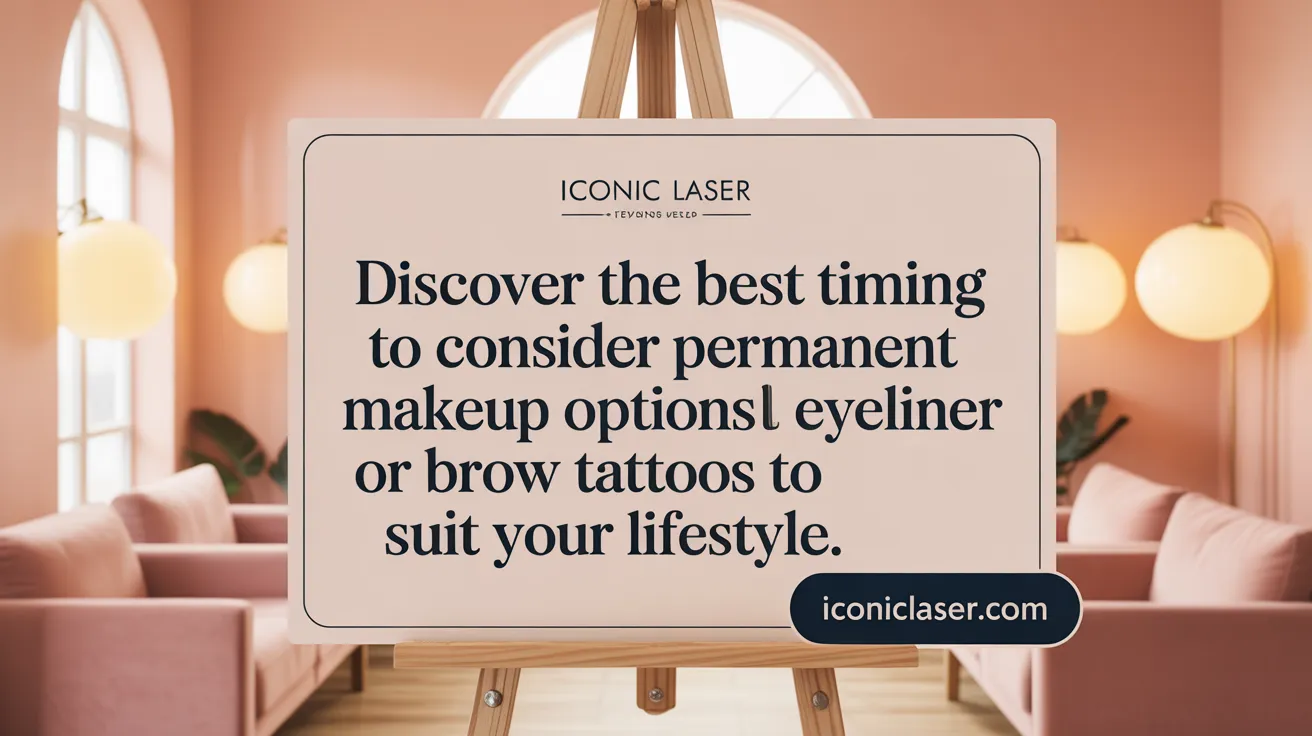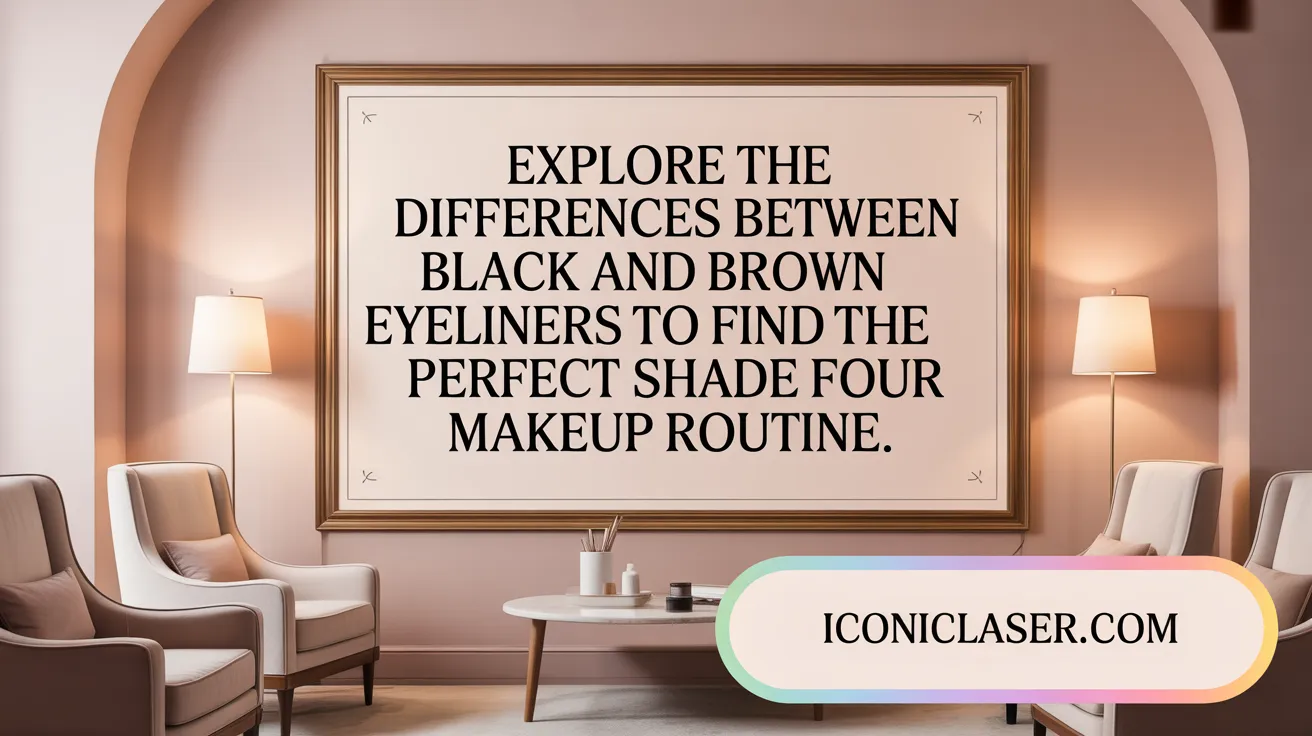Understanding the Rise in Popularity of Permanent Eyeliner and Brow Tattoos
Permanent eyeliner and brown tattoos have gained significant attention as semi-permanent cosmetic enhancements that simplify daily beauty routines and provide long-lasting eye definition. This article explores when and why individuals might consider these procedures, covering everything from the technical details and safety considerations to the personalization based on individual features such as eye color, skin tone, and eye shape.
Decoding Permanent Eyeliner and Brown Tattoos: Procedures and Techniques
What are permanent eyeliner and brown tattoos, and what procedures and techniques are involved?
Permanent eyeliner and brown tattoos are semi-permanent cosmetic treatments designed to enhance the eyes by depositing pigment along the lash line. These procedures create the illusion of eyeliner, offering long-lasting results that typically fade within one to three years.
The process involves using a fine needle attached to a tattoo gun or a manual tool to carefully inject pigment into the upper layers of the skin. Before starting, the area is thoroughly cleaned and numbed with topical anesthetics to minimize discomfort. The technician may choose different styles, such as lash enhancement, thin or thick eyeliner, or trendy winged looks, depending on client preferences.
Preparation is crucial; individuals are advised to remove lash extensions, stop blood-thinning medications, and avoid irritants like retinol or glycolic acids around the eye area. During the procedure, clients usually experience a slight stinging or vibration, but pain is generally tolerable due to effective numbing.
The pigments used are larger in particle size than traditional tattoo ink, a characteristic that makes them semi-permanent. Over time, these particles are gradually broken down and absorbed by the body, causing the color to fade. This process allows clients to enjoy the benefits of smudge-proof, waterproof makeup without permanent commitment.
Healing is a natural part of the process. After the procedure, mild swelling, redness, and crusting are common. The area needs to be kept dry and free from makeup, while avoiding water and sweat to prevent infection and ensure good healing. Follow-up touch-ups, typically scheduled 8 to 12 weeks after the initial session, help maintain the depth and vibrancy of the pigment.
Choosing the right shade and style depends on personal preferences, skin tone, and eye color. Colors like black and brown are popular, but options include charcoal gray, navy, taupe, and soft burgundy, which can be tailored to create a natural or more dramatic look.
Overall, permanent eyeliner and brown tattoos provide a convenient, long-lasting enhancement for everyday beauty routines, especially beneficial for those with allergies, sensitivities, or limited dexterity. However, selecting a certified, experienced technician and following proper aftercare are essential to achieve safe and satisfactory results.
Identifying the Ideal Timing to Opt for Permanent Eyeliner or Brown Tattoos
 Deciding when to opt for permanent eyeliner or brown tattoo makeup depends on several personal factors and lifestyle considerations.
Deciding when to opt for permanent eyeliner or brown tattoo makeup depends on several personal factors and lifestyle considerations.
People who find it challenging to apply daily makeup—due to allergies, sensitive eyes, or physical limitations—may benefit from this semi-permanent solution. Individuals with busy schedules or those frequently involved in activities like swimming, exercising, or outdoor adventures can enjoy maintained eye enhancement without fuss.
Consultation and customization play crucial roles in achieving satisfying results. Clients should work with experienced, licensed technicians to select shades that complement their eye and skin tones. For example, brown, charcoal gray, navy, and taupe are popular choices that offer subtle, natural looks and individualized flair.
The procedure duration varies from about 45 minutes for a simple lash line enhancement to up to three hours for more elaborate styles, including thicker lines or winged designs. Regular touch-ups are often recommended every two to five years, as the pigment gradually fades due to skin type, exposure to sunlight, and lifestyle habits.
This approach is especially suitable for those with specific needs, such as individuals with allergies to makeup, visual impairments that hinder precise application, or conditions that cause skin sensitivities. Many find permanent makeup a time-saving alternative to daily eyeliner application while maintaining a fresh, polished appearance.
Before the procedure, detailed consultations ensure proper customization, and care instructions—like avoiding water, dust, and eye makeup during healing—are essential for optimal outcomes.
In summary, consider permanent eyeliner or brown tattoos if you desire a durable, low-maintenance enhancement that aligns with your lifestyle, skin sensitivities, and aesthetic preferences. Always seek professional advice to determine the most suitable style, color, and timing for your unique circumstances.
Weighing the Benefits and Risks of Permanent Eyeliner and Brow Tattoos

What are the benefits, risks, and considerations involved in permanent eyeliner and brow tattoo procedures?
Permanent eyeliner and brow tattoos are popular options for individuals looking to enhance their eye and brow areas with long-lasting results. One of the main advantages is the significant time savings in daily makeup routines, as the pigment remains in place, eliminating the need for applying eyeliner or filling in brows each day.
These procedures also offer consistent, smudge-proof, and waterproof makeup, which is especially useful during physical activities such as swimming, exercising, or in humid conditions. They can be particularly beneficial for people with allergies to traditional makeup, sensitivities, or physical limitations that make precise makeup application difficult.
However, there are important risks to consider. If not performed properly, the procedures can lead to infections, allergic reactions, or ink migration, where pigment spreads outside the intended area. There's also a chance of scarring or bumps if the skin reacts negatively or if the procedure is done with contaminated equipment.
Pigments naturally fade over time—generally within one to three years—and fading results may require touch-ups. Some pigments can cause inflammatory responses or hyperpigmentation, especially in older clients or those with lax skin, which can affect the overall appearance.
The skill and hygiene standards of the technician directly influence outcomes and safety. Working with a qualified, experienced professional who employs strict sterilization protocols minimizes complications. It's essential to verify their licensing, training, and reputation.
Other considerations include possible interference with MRI scans, difficulty in removing the pigment if you change your mind, and the natural changes in facial features that can alter the look of the tattoo over time. These factors should be carefully weighed before committing to permanent or semi-permanent eye and brow enhancements.
Tailoring Permanent Eyeliner and Brow Tattoos to Eye Color, Skin Tone, and Shape
Selecting the right permanent eyeliner shade and style depends heavily on individual eye color, skin tone, and eye shape, ensuring a natural and flattering appearance.
How do eye color, skin tone, and eye shape affect the suitability of permanent eyeliner or brow tattoos?
Eye color is a primary consideration in choosing pigment shades. For example, individuals with green eyes typically benefit from softer tones like Cocoa Bean, which enhances the green without overpowering it. Blue-eyed clients often look great with dark brown or navy shades that complement their eye color, while hazel eyes can be beautifully accentuated with rich Espresso or Fudge tones.
Skin tone plays an equally vital role. Using the Fitzpatrick Scale, tattoo specialists can determine the appropriate pigment saturation and hue. For darker skin types (Fitzpatrick Types V and VI), deeper shades like Dark Chocolate, Black, or Brown Black help ensure longevity and vibrancy. Lighter skin tones usually suit softer, more natural shades like taupe or soft burgundy to prevent an overly stark appearance.
Eye shape influences style choices, as styles like lash enhancement, classic eyeliner, or winged designs are tailored to highlight different contours. For example, a wider wing may be suitable for upward-tilted eyes, while a subtle lash enhancement can add depth to smaller or hooded eyes. The natural shape also guides the placement, ensuring the permanent makeup complements the eye's structure.
Personal factors, including eye sensitivity and specific features, should be considered during consultation. Individuals with sensitive skin or conditions like dry eyes may need gentler pigments or alternative techniques. These customized approaches help achieve harmonized results that enhance natural beauty.
By carefully assessing eye color, skin tone, eye shape, and personal preferences, professionals can select the most compatible pigments and styles. This comprehensive tailoring ensures the final look is both aesthetically pleasing and suited to the individual's unique features, offering lasting confidence and convenience.
Longevity, Style Versatility, and Essential Aftercare for Permanent Eyeliner
 Permanent eyeliner generally lasts between 1 to 3 years, with many individuals needing touch-ups every 12 to 18 months to keep the appearance fresh and vibrant. Some styles, such as lash enhancement, can extend their longevity up to five years, especially with diligent aftercare. The variety of available styles accommodates personal preferences and eye shapes, including subtle lash lines, thin or medium-width liners, bold thick lines, and winged designs. These options allow for natural enhancement or more dramatic effects, making it easy to select a look that matches your style.
Permanent eyeliner generally lasts between 1 to 3 years, with many individuals needing touch-ups every 12 to 18 months to keep the appearance fresh and vibrant. Some styles, such as lash enhancement, can extend their longevity up to five years, especially with diligent aftercare. The variety of available styles accommodates personal preferences and eye shapes, including subtle lash lines, thin or medium-width liners, bold thick lines, and winged designs. These options allow for natural enhancement or more dramatic effects, making it easy to select a look that matches your style.
Post-procedure care plays a crucial role in maintaining the results. During the initial healing phase, it’s important to avoid water, eye makeup, and sun exposure for about a week. Applying prescribed ointments helps keep the area moist and assists healing. Participants should also refrain from rubbing their eyes, swimming, or engaging in heavy exercise until fully healed. Proper aftercare minimizes risks of infection, pigmentation fading, and other complications.
Several factors influence the longevity of permanent eyeliner. Skin type, especially oily skin, can cause pigments to fade more quickly. The quality of pigments used and the professionalism of the application technique are also vital. Lifestyle habits like excessive sun exposure and skincare routines involving retinol or glycolic acid can accelerate fading. Regular touch-ups and consistent aftercare extend-lasting effects, ensuring the eyeliner retains its depth and clarity over time.
Overall, understanding the range of styles and following strict post-treatment guidelines significantly enhances the durability of permanent eyeliner, allowing for a polished look that requires less daily maintenance.
Distinguishing Between Black and Brown Permanent Eyeliners: Suitability and Effect

How do black and brown permanent eyeliners differ, and which is more suitable for different skin tones?
Black and brown permanent eyeliners vary mainly in their intensity and the naturalness of the appearance they create. Black eyeliner offers a bold, dramatic look that enhances the eye's definition, making it a popular choice for those desiring striking, high-contrast results. It is particularly effective in creating a classic, intense eyeliner appearance.
In contrast, brown eyeliner provides a softer, more subtle enhancement that mimics natural lash lines. It is ideal for clients seeking a more understated, everyday look, and tends to blend smoothly with lighter or warmer skin tones.
The suitability of each color also depends on individual eye color and skin tone. For darker skin tones, especially Fitzpatrick Types V and VI, darker shades like Dark Chocolate or pure Black are typically recommended to ensure visibility and longevity. Conversely, lighter skin tones often benefit from brown shades, which prevent harsh contrasts and create a more natural finish.
Certain eye colors can be accented with specific shades: green-eyed clients may prefer Cocoa Bean for a flattering natural look, while hazel eyes can be paired with Espresso for boldness. For blue or gray eyes, darker browns or even black can enhance eye color without overpowering it.
Choosing the right eyeliner shade requires careful consideration of skin tone, eye color, and personal style. While black can deliver maximum impact on darker skin, it may look too intense on fair skin if not blended carefully. Brown shades, especially those with warm undertones, are more versatile across complexions.
Ultimately, the decision should be based on the desired aesthetic, eye and skin features, and the professional's advice to ensure a harmonious, long-lasting result that enhances natural beauty.
Who Should Avoid Permanent Eyeliner? Understanding Contraindications and Risks
Who might not be suitable candidates for permanent eyeliner, and what conditions increase risks?
Not everyone is a good fit for permanent eyeliner procedures. Individuals with specific health conditions or skin issues are advised to avoid or carefully consider the treatment.
People with thin eyelid skin or visible veins may experience uneven pigment absorption, leading to unsatisfactory results. Skin conditions such as psoriasis, eczema, or active infections around the eye area can interfere with healing and cause complications. Allergic reactions to pigments, anesthetics, or related materials are also significant concerns; allergy testing prior to the procedure is recommended.
Certain medical conditions pose higher risks. Autoimmune diseases, bleeding disorders like hemophilia, or those on blood-thinning medications can lead to increased bleeding, bruising, and a higher chance of infection. Moreover, patients prone to forming keloids or hypertrophic scars should approach with caution, as the procedure may worsen scarring.
Active eye conditions, such as herpes zoster in the eye area, can flare or reoccur when subjected to procedures like permanent eyeliner. Thus, consulting a healthcare professional before scheduling for the treatment is essential for individuals with these conditions.
In summary, candidates must carefully evaluate their health status and discuss with a medical provider to avoid adverse reactions and ensure a safe, effective outcome. Proper medical consultation helps identify potential risks and contraindications, safeguarding health and cosmetic satisfaction.
Common Challenges and Solutions in Permanent Eyeliner Procedures

What are some common issues such as fading or complications that can occur with permanent eyeliner, and how can they be addressed?
Permanent eyeliner is generally a safe and effective procedure, but like any cosmetic treatment, it can present certain challenges over time.
One of the most frequent issues is fading of the pigment, which can occur due to sun exposure, skin type, or the natural aging process. Colors may also change, turning into undesirable shades like blue or grey, especially if darker pigments like carbon black are used without proper technique.
Uneven application or pigmentation spots can result from inconsistencies during the initial procedure or through skin reactions. Ink migration, where pigment spreads beyond the intended area, can lead to a blurred or smudged appearance and is more difficult to correct.
Addressing these problems depends on their nature. For fading, touch-up sessions generally help restore color vibrancy and shape. To correct uneven pigment, additional procedures such as shading or implantation may be necessary.
Ink migration issues often require specialized correction, which can involve laser treatments like Q-switched Nd:YAG laser. These can help break down excess pigment, but multiple sessions increase the risk of tissue damage or oversaturation.
It's crucial to work with a qualified, experienced technician who can minimize complications from the outset. Proper aftercare, including avoiding excessive sun exposure and following hygiene instructions, plays a vital role in maintaining good results.
In summary, while fading, color shifts, and uneven pigment distribution are common challenges, they are manageable through professional correction techniques and diligent aftercare. Consulting with an expert ensures the best approach for correction and long-lasting, satisfying results.
Professional Standards: Ensuring Safety and Artistic Excellence in Permanent Makeup
Role of tattoo shops in procedure safety
Tattoo shops serve as ideal environments for permanent makeup procedures because they uphold high hygiene and safety standards. These shops are equipped with sterilized tools and: have strict protocols to prevent infections. Their environment minimizes risks such as cross-contamination, making them safer options compared to unregulated settings.
Training and skills of tattoo artists in micropigmentation
Artists performing permanent eyeliner must combine artistic skill with technical training. They are specially trained in micro-pigmentation techniques, which require precise placement of pigments to enhance natural features. Good artists understand facial anatomy and how various styles will age over time, ensuring tailored results for each client.
Hygiene, sterilization, and bloodborne pathogen protocols
Strict hygiene practices are critical during and after the procedure. Professionals use sterilized equipment and wear gloves to prevent infection. They follow bloodborne pathogen standards, similar to those in medical environments, to protect clients from disease transmission.
Importance of choosing licensed and experienced professionals
Selecting a licensed technician is essential for safety and quality results. Reputable practitioners have undergone specific training, certifications, and often work in licensed tattoo shops. Their experience ensures the procedure is performed skillfully, reducing risks like uneven pigmentation, scarring, or allergic reactions.
| Aspect | Details | Impact |
|---|---|---|
| Environment | High hygiene standards, sterilized tools, professional setting | Reduces infection risk |
| Technician expertise | Trained in micropigmentation, artistic skill, facial anatomy knowledge | Ensures natural, flattering results |
| Certification and licensing | Official licenses, ongoing education, adherence to safety protocols | Guarantees compliance with health regulations |
| Equipment and supplies | Use of high-quality, sterilized needles and pigments | Ensures safety, durability, and color fidelity |
Adhering to these standards fosters not only aesthetic excellence but also the safety and well-being of clients.
This focus on professional standards helps maintain trust in permanent makeup, ensuring each client receives results that are both beautiful and safe.
Selecting the Right Style and Preparing for Your Permanent Eyeliner Appointment
Consultation and style selection process
Choosing the right style of permanent eyeliner involves a thorough consultation with a trained professional. During this session, clients discuss their preferences, desired eye appearance, and suitable techniques such as lash enhancement, thin or thick eyeliner, or winged styles. The technician will recommend options based on factors like eyelid shape, eye color, and skin type, ensuring the result complements individual features.
Importance of client’s natural makeup style for customization
It is helpful if clients bring photos or examples of their preferred look. This helps in customizing the design to match their natural makeup style or the specific aesthetic they aim to achieve. For example, someone seeking a subtle enhancement might opt for a lash line boost, while others may prefer more defined or dramatic lines. Understanding personal style helps in selecting the perfect color and thickness for a harmonious, flattering result.
Pre-procedure preparation and avoidance guidelines
Before the appointment, clients should follow key preparation steps. These include removing eye makeup and lash extensions, avoiding blood thinners and skincare products containing retinol or glycolic acid around the eyes for at least a week, and arriving with clean, makeup-free skin. It’s also advisable to perform a patch test for allergies, especially with pigments or numbing agents, and to consult a doctor if pregnant or nursing.
Adjusting expectations for aging and skin changes
Clients should keep in mind that as skin ages or undergoes changes, the appearance of their permanent eyeliner may evolve. Fine lines, sagging, or thinning skin can affect how the pigment settles and ages. Choosing a professional with experience can help ensure the style is suitable for future skin shifts. Regular touch-ups, typically every 2-3 years, can refresh the color and shape, maintaining optimal appearance over time.
Making an Informed Decision About Permanent Eyeliner and Brown Tattoos
Choosing to undergo permanent eyeliner or brown tattoo procedures is a personal and sometimes transformative decision that demands careful consideration of individual needs, lifestyle, and health status. Understanding the procedure, evaluating risks and benefits, and selecting the right pigment shades and styles tailored to one’s eye color, skin tone, and shape are essential steps. Additionally, ensuring the procedure is performed by certified professionals in sterile environments reduces complications and promotes better results. With proper aftercare and regular touch-ups, permanent eyeliner can offer years of enhanced natural beauty and convenience. Ultimately, timing and suitability hinge on personal goals and readiness — making consultation with experienced micropigmentation specialists the cornerstone of a satisfying outcome.
References
- Your Guide to Everything Permanent Eyeliner - Facette
- Semi-Permanent Eyeliner Tattoo: A Guide to Choosing the Right Color
- Everything You Need To Know About Eyeliner Tattoo - OLLI SKIN
- Permanent Makeup: Beauty or Tattoo Shop?
- Choosing the Right Permanent Makeup Eyeliner for Their Eye Color
- Permanent eyeliner: Pros and cons of cosmetic tattoos
- Permanent Eyeliner FAQ: Everything You Need to Know | Makeup.com
- Semi-Permanent Eyeliner Tattooing: My Experience and Review
- Permanent Eyeliner Styles and Tips - Esthetics NW Services
- Permanent Eyeliner Exists, and It's Surprisingly Very Subtle - Byrdie
